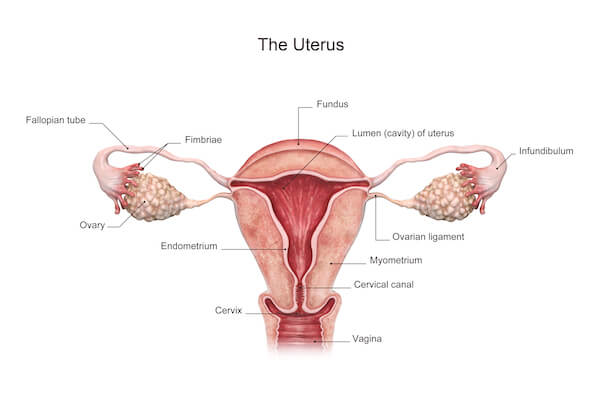Uterine Evaluation
The uterus is lined by a specialized layer of cells called the endometrium. It is to this lining that embryos implant and begin to develop in pregnancy. It is critical to thoroughly evaluate the uterine cavity for potential defects or obstacles to the implantation of the embryo.
Some of the potential defects would be uterine scar tissue (from previous pregnancies or procedures), polyps (benign glandular growths), fibroids, or other structural defects in the uterus.
The uterus or womb plays an important role in fertility. It is where the embryo (baby) implants and grows. Having a good environment to grow and nurture the baby is important.
No matter what type of fertility treatment is performed, including IVF or IUI, having a normal uterus is important.
The uterus is made of soft tissue (like the fallopian tubes), so it cannot be seen on a normal X-ray and specialized imaging tests may need to be performed. Depending on your specific situation, the evaluation may include the following tests:

ArtStation. Image source: https://www.artstation.com/artwork/n9AE9
1. Complete physical examination
This will also include a Pap’s Smear (if not done within the last year), breast examination, and cervical cultures.
2. Pelvic ultrasound
This is a transvaginal ultrasound examination usually performed at the onset of your menstrual cycle on Day 2 or 3. It gives the physician information on the direction and length of the uterine cavity.
3. Hydrosonography (fluid ultrasound)
This involves fluid injection into the endometrial cavity and simultaneous transvaginal sonography to visualize the endometrial cavity. Hydrosonography provides information about the pathological lesions in the endometrial cavity for instance myomas, polyps, adhesions, and congenital anomalies as well as limited information on tubal patency.
4. Hysterosalpingogram
(HSG) is the traditional method used in the evaluation of the infertile patient and provides extensive information about the endometrial cavity as well as the fallopian tubes. It involves evaluation of the endometrial cavity with good sensitivity to look out for the presence of myomas, polyps, intrauterine adhesions, congenital anomalies, the fallopian tubes, and the possibility of a spontaneous pregnancy following the procedure.
5. Endometrial Biopsy
This test is only performed in certain circumstances in order to diagnose problems in the development of the endometrium, called luteal phase defect, or to diagnose possible infection of the endometrial lining. This test is used to rule out precancerous growth in the uterine cells called endometrial hyperplasia or endometrial cancer.
It can be done anytime but preferably before ovulation (first part of the cycle) to avoid interference with a possible pregnancy in the uterus.
Book Your
Appointment today!
Make an Appointment


